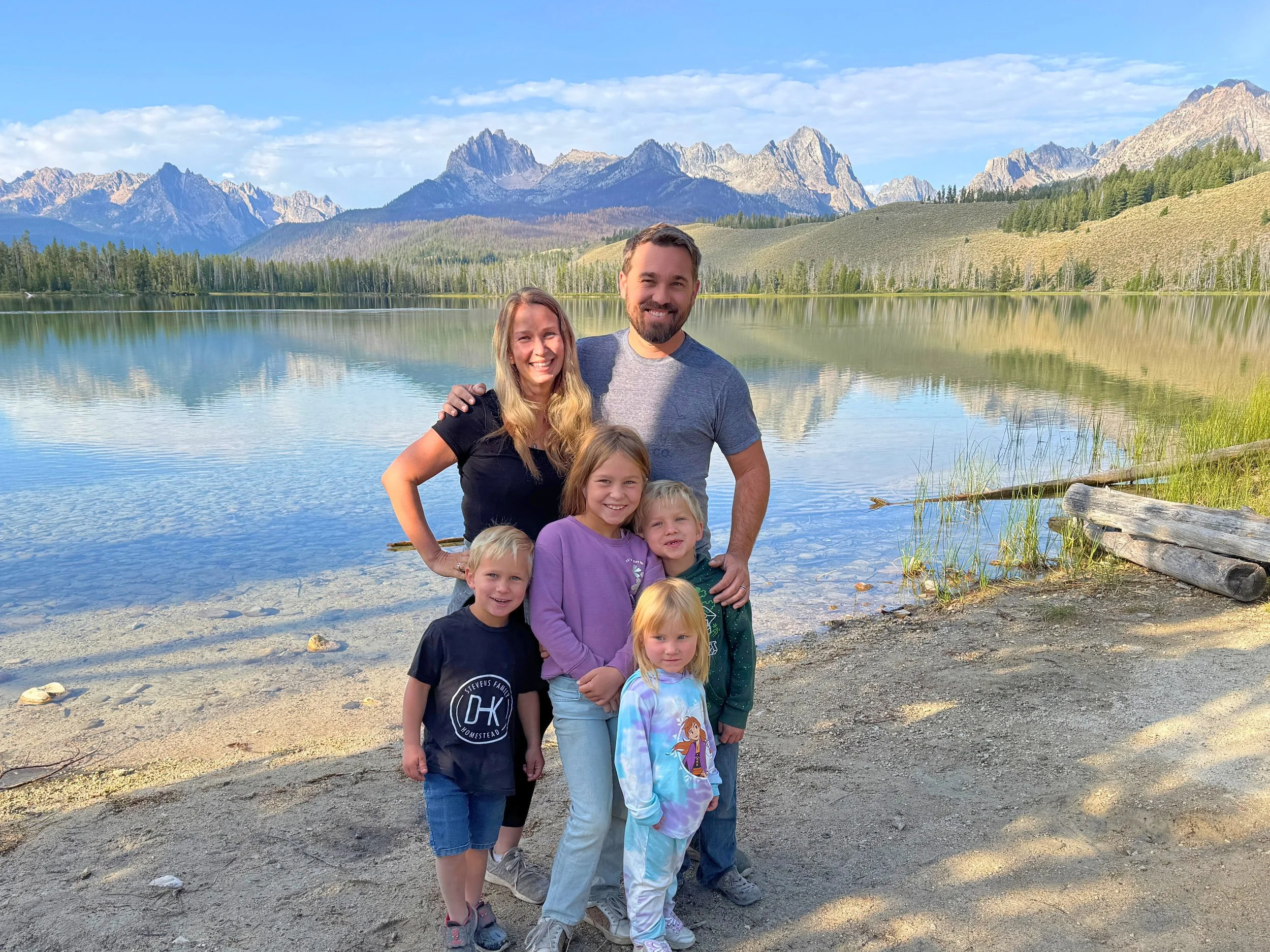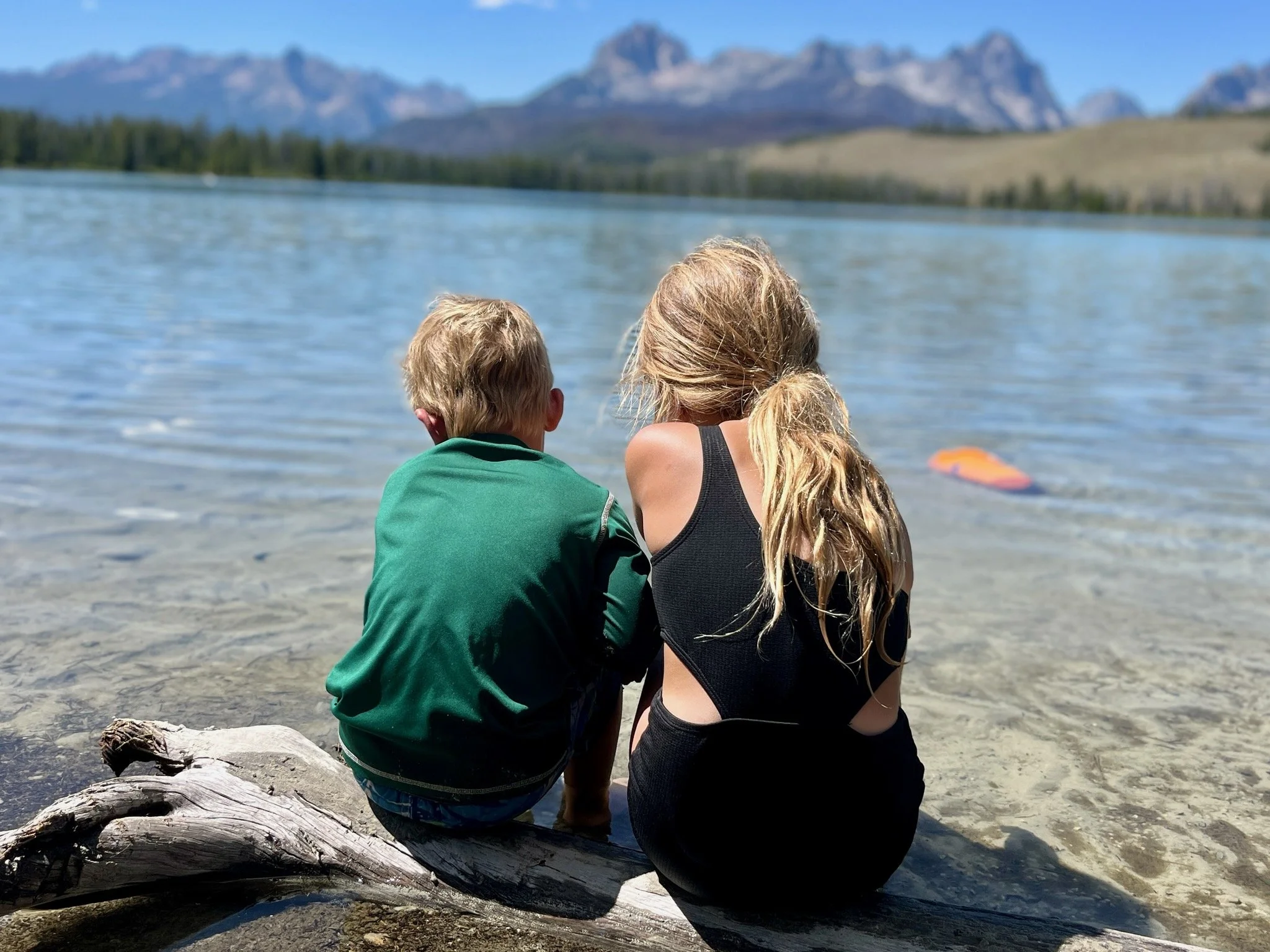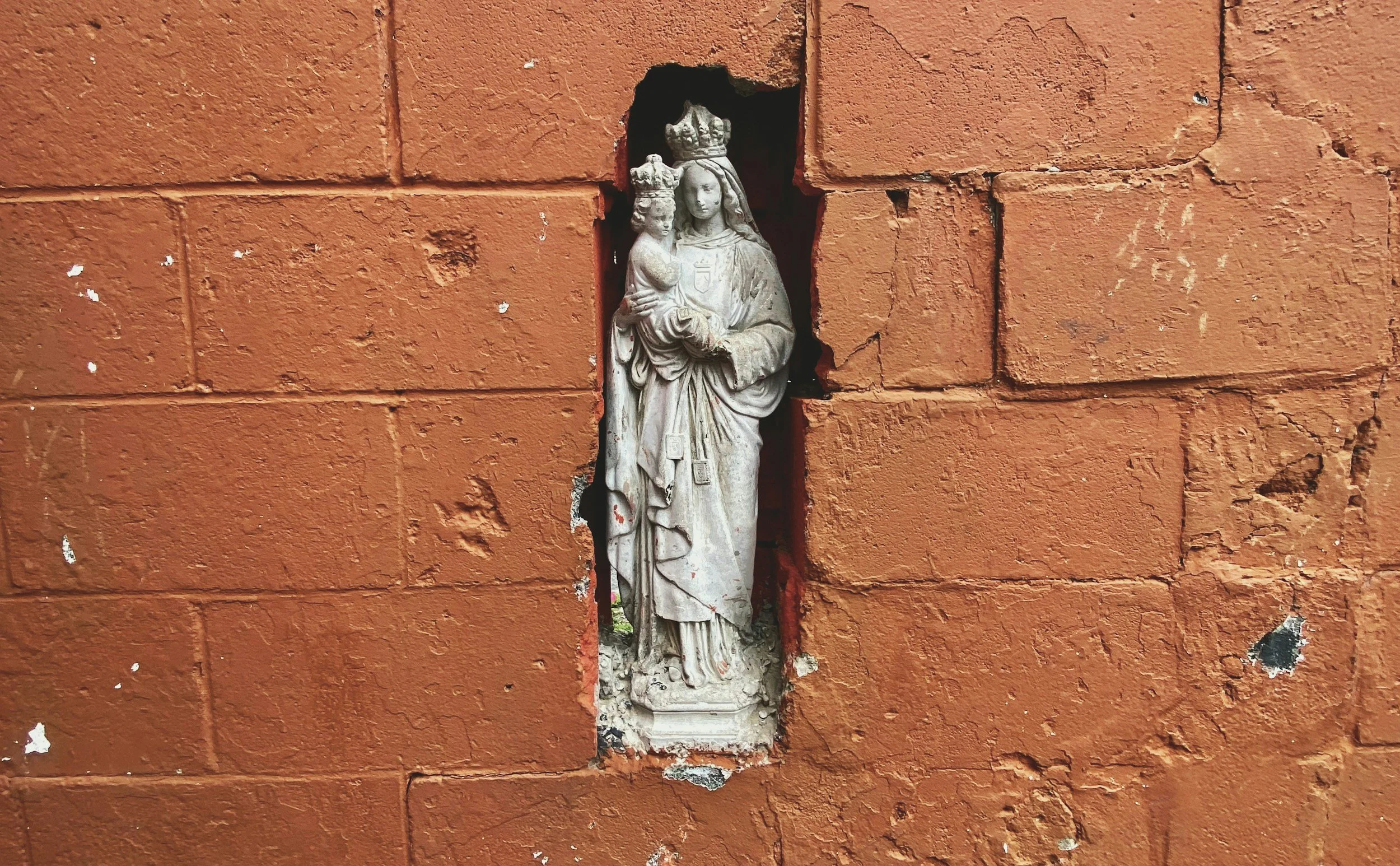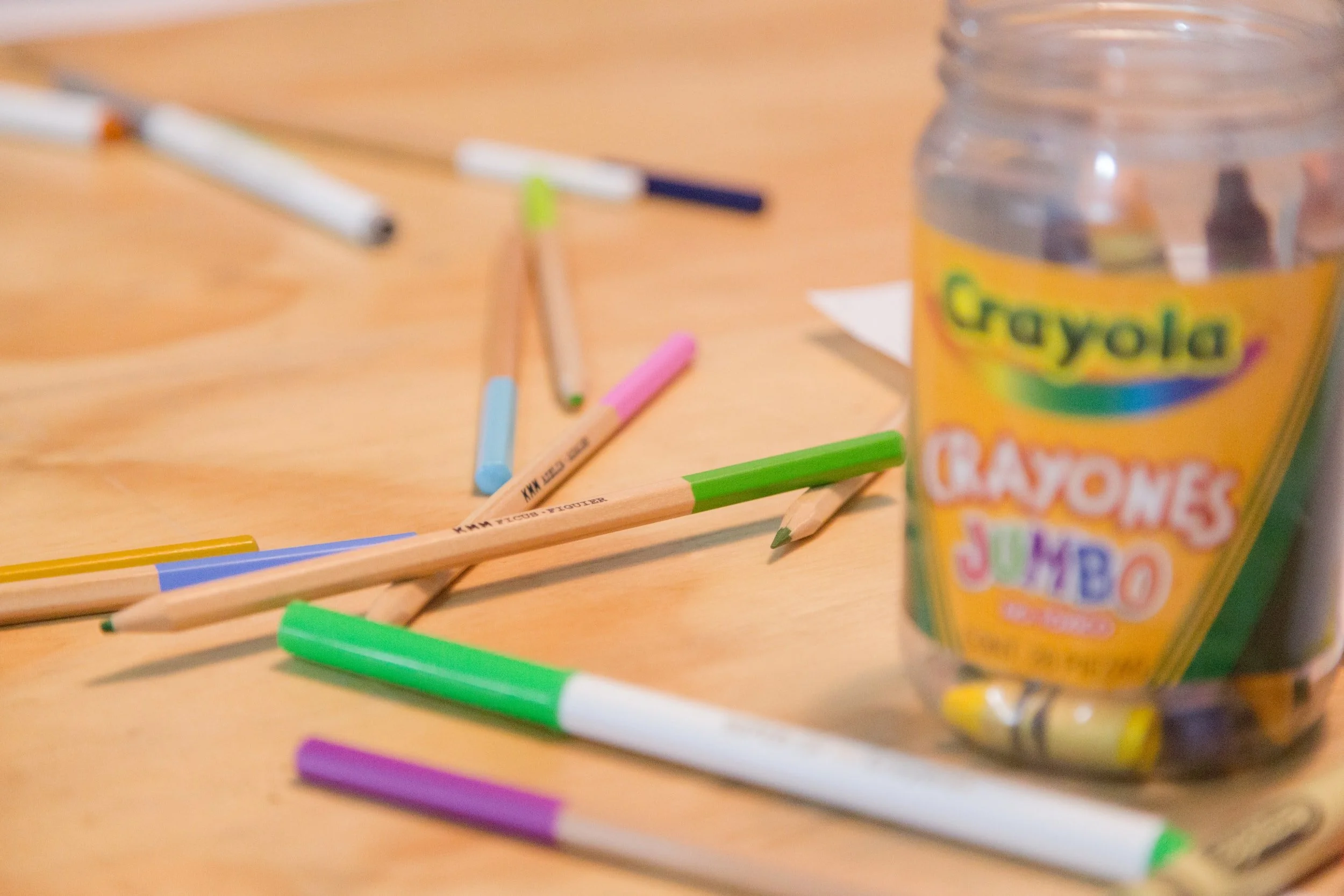I recently had a great conversation with Maria Morera Johnson on the CatholicMomcast. It was a great conversation (you can listen to the 26-minute episode here). We discussed all our favorite mom hacks, but I’ll be honest: my kids interrupted many times, and I felt very frazzled as I tried to share what was on my heart.
Here’s a mom hack for you: ALWAYS get a sitter for podcast interviews.
In all seriousness, though, many ideas have been rolling around since our chat, so I thought I would continue the conversation here with all of you. So, now that we have established that I absolutely do not have it all together, here are my thoughts on what is working in this season of motherhood.
Atomic Habits for Moms
As mothers, our days feel full before our feet even hit the floor. The needs come fast and constant: meals to make, diapers to change, math lessons to teach, squabbles to referee, work deadlines, and maybe—if we’re honest—a lingering guilt over the prayer time we wish we had but can’t seem to make space for.
When I first read James Clear’s Atomic Habits, I was struck by his reminder that small, consistent changes lead to big results. For moms, especially Catholic moms striving to live intentionally in the chaos, the key isn’t cramming more into our already packed days. It’s letting God into the little things we’re already doing.
Here are a few ways to start building tiny, grace-filled habits into daily life—without adding more pressure, and without waiting for a mythical “perfect season” that may never come.
1. Start Small: One Tiny Habit That Changes Everything
For me, that habit is prayer.
Not the hour-long, candlelit holy hour I wish I had most mornings. I’m talking about a simple Morning Offering over coffee, a whispered “Jesus, I trust in You” while buckling a car seat, a Memorare while unloading the dishwasher. These small, hidden prayers anchor the day, reminding us whose we are.
I’ve even tied habits together: coffee + prayer. My “Morning Offering mug” is my cue to turn my first sip into praise.
Some mornings, journaling helps me recenter—filling the tank before I pour myself out for my family. Other days, I pray the Rosary on a walk or listen to the Divine Office while folding laundry. Prayer doesn’t have to be perfect. It just has to be real.
Jesus tells us in John 15:5:
“Apart from Me, you can do nothing.”
Not a little.
Not “not much.”
Nothing.
There’s so much freedom in that surrender. Fr. Jacques Philippe uses the image of a still lake like the one in our family photo—when the water is calm, it reflects the mountain perfectly. When it’s agitated, nothing is clear. Our souls are like that lake. Prayer invites the stillness where Christ can be reflected.
2. Stack Your Habits: Invite God Into What You’re Already Doing
One of Clear’s most helpful strategies is habit stacking—pairing a new habit with an existing one. For Catholic moms, this can be a game-changer:
Morning Offering mug to pray before coffee
Rosary walks to feed your soul and steward your health
Laundry folding can be paired with a podcast or audiobook that lifts you up
Nursing time is a favorite of mine to pray a decade of the Rosary or the Divine Mercy Chaplet
Got a commute? listen to the Divine Office, an audio Rosary, or Scripture
Paste prayer prompts: tape Scripture verses on mirrors, post a Saint Francis prayer above the sink, or swap out letterboard verses in the kitchen
Sacred pauses like the Angelus at noon, a quick Memorare in the mess, a jubilant “Thank You, Jesus!” when something goes right
These small anchors keep us tethered to Christ without overcomplicating the day.
3. Develop Walls for Your Digital Rule of Life
James Clear reminds us that environment shapes behavior. One of the most freeing shifts I made was dumbing down my phone.
I stripped it down to what truly serves my vocation: text messages, camera, Divine Office app, Rosary app, banking, podcasts, and audiobooks. No social media. No Amazon. No browser. No YouTube.
For Catholic moms, protecting our attention is a spiritual discipline. Our ability to pray, to be present to our kids, and to love well depends on where our attention rests.
If you want to reclaim quiet, here are a few ideas:
Delete distractions. Create distance from apps that rob your peace.
Use Instapaper. Save intentional reading for waiting rooms instead of endless scrolling.
Take phone Sabbaths. Put it away during breakfast, bedtime, or weekends.
Read more. A 2009 University of Sussex study found that just six minutes of reading a day can reduce stress by 68%. That’s six minutes you could spend scrolling—but why not fill your soul instead?
Our phones aren’t just costing us serenity—they’re costing us presence. Every yes to distraction is a no to real life unfolding right in front of us.
Thanks for reading Slow Motherhood! Subscribe for free to receive new posts and support my work.
4. Lean Into Seasons
Moms don’t need more pressure. We need more peace.
I’ve learned to work with the seasons God has given me. In summer, my rhythm shifts toward writing, recording podcasts, and creative deep dives. During the school year, our days move into homeschooling mode.
A few rhythms that help keep both home and soul grounded:
Meal planning on autopilot. We have Muffin Mondays, Toast Tuesdays, and Oatmeal Thursdays. Decision fatigue, gone.
Zone cleaning on a loop. Even if you miss a day, it cycles back around.
Daily anchors. Morning prayer, school blocks, rest time, dinner prep, bedtime ritual—our kids thrive when they know what to expect.
Movement matters. Even 20 minutes of walking daily improves longevity and energy. If 20 feels like too much, start with five. Small steps add up.
Build margin. Everything takes longer than you think. Leaving space for interruptions transforms frustration into flexibility.
Rhythms free us from constantly reinventing the wheel and make space for spontaneous joy.
5. Little Loaves, Big Miracles
At the end of the day, Catholic motherhood isn’t about doing more—it’s about bringing our loaves and fishes and trusting God to multiply them.
Some days we get it wrong. We lose our patience. We yell. We fail. But those moments are invitations to model humility:
“I’m sorry. Please forgive me.”
The devil loves to steal our peace when we fail, but every failure is a chance to grow in humility. As Fr. Jacques Philippe reminds us in Searching for and Maintaining Peace, our littleness isn’t a problem—it’s the place where God meets us.
Every small step, every whispered prayer, every imperfect effort adds up over time. Holiness doesn’t happen in grand gestures. It happens in the hidden, ordinary, repeated moments of saying “yes.”
Motherhood is a thousand tiny habits lived faithfully. And when we root those habits in Christ, our small steps begin to ripple into eternity.
YOUR turn! Tell me your favorite “mom hack” in the comments below!













